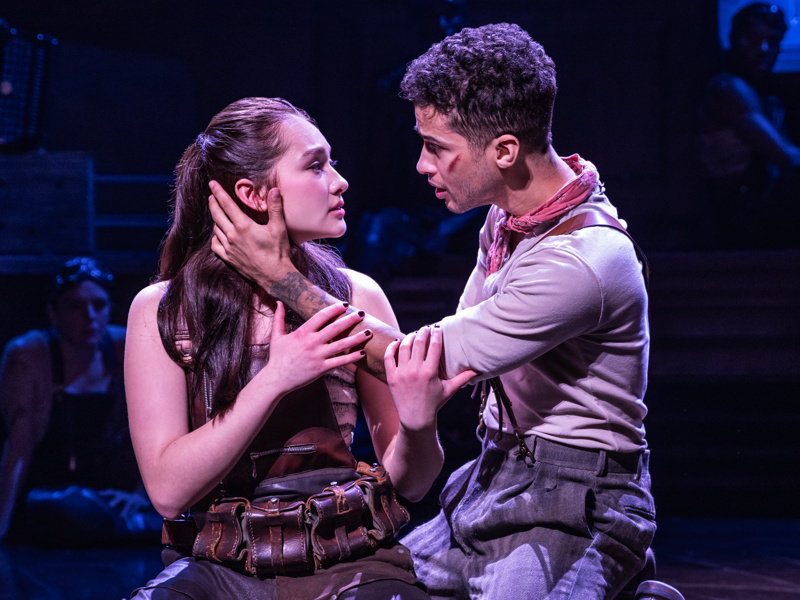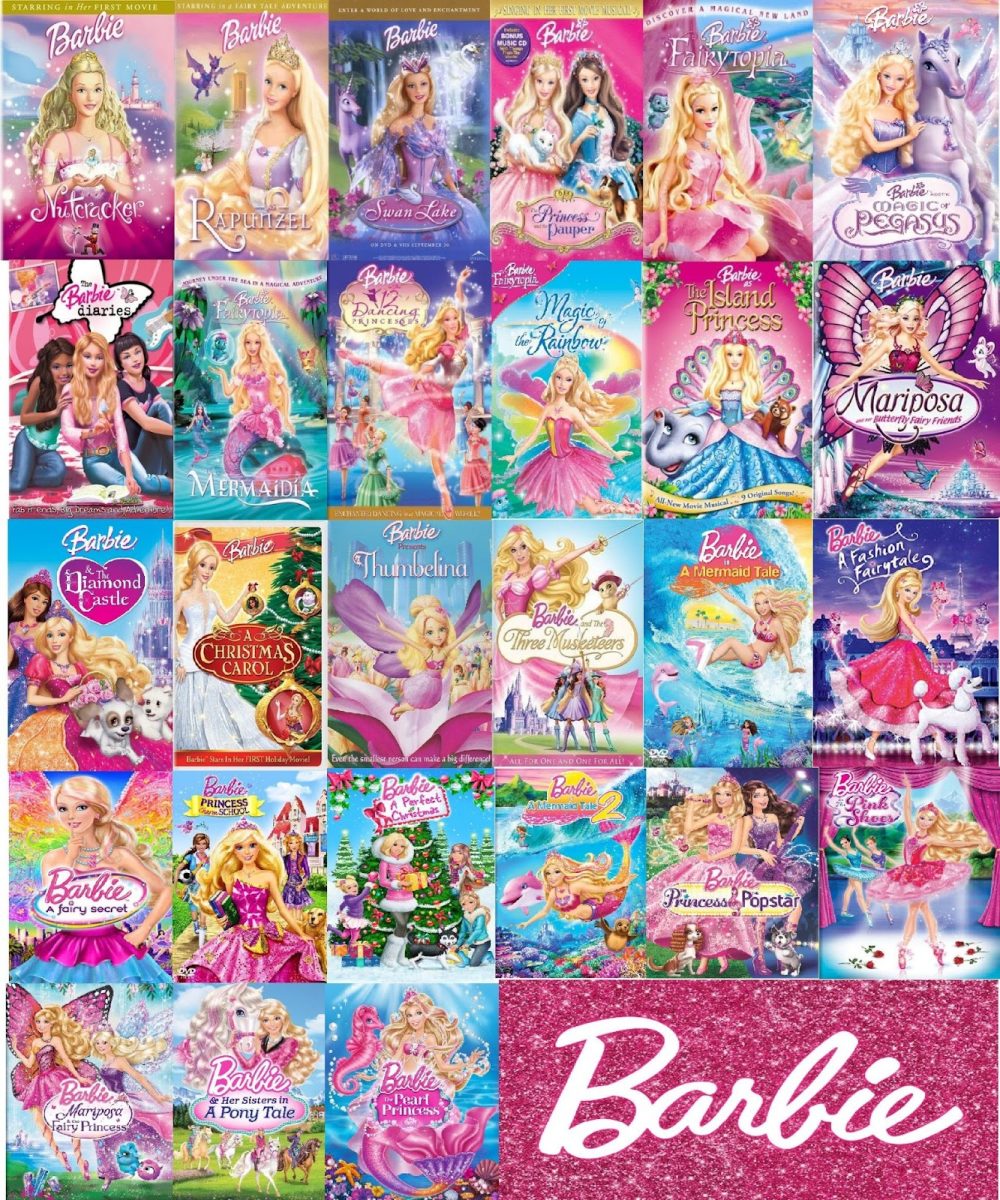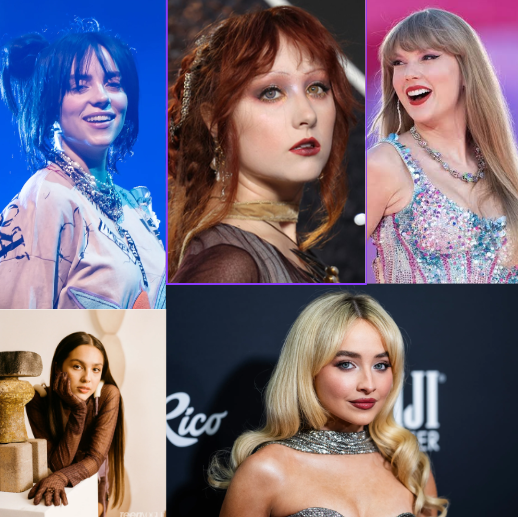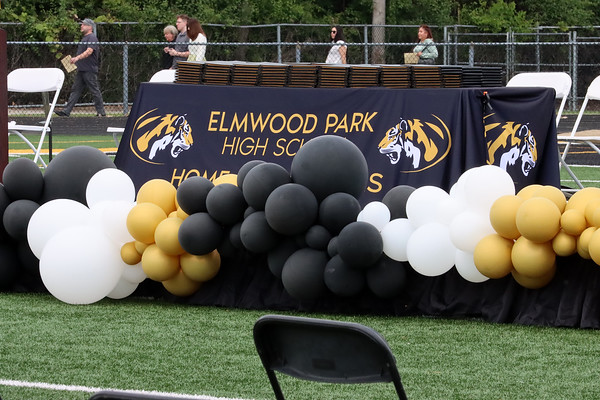With Valentine’s Day around the corner, we’re inevitably inundated with romantic movies, songs, and television shows. These pop culture media staples are classics and have become so annually enjoyed that everyone seemingly knows them. But what if you’re tired of watching the same three rom-com movies over and over again or hearing Elvis Presley love songs on the radio? Perhaps try enjoying something that combines the best elements of romance movies and songs: Broadway.
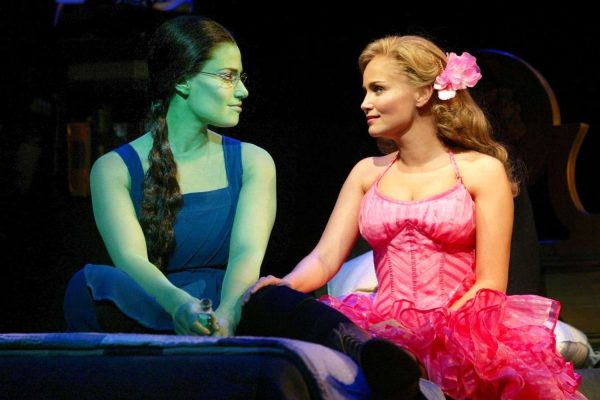
When you think of musicals, oftentimes what comes to mind are the dramatic cult classics, such as Wicked (2003), Les Mis (1987), Chicago (1975), and Hamilton (2015). But these aren’t all the Broadway world has to offer. Many times overlooked are romance musicals. Romance is very prevalent in musicals; it is a common story feature used to pull audiences into a musical not typically seen as romantic (e.g. Rent, Hairspray). But musicals that focus and revolve around romance are reminiscent of the aforementioned rom-com movies we all know and love during this time of year. They are an excellent substitute and a fun way to enjoy the Valentine’s Day spirit. Romance musicals are just as vital to the Broadway industry as tragedies and comedies, and just like movies, they fall under many subcategories. So let’s take a look at those categories and the best romance musicals Broadway has to offer.
Classical Romance
Classical musicals are some of the most famous ones in existence. These are typically from the Golden Age of theater, which spanned from around 1920 to 1960. This period marked a large development for musical theater; songs and dances began to be integrated into the plot, rather than just an interlude or break in the story. Romance in these musicals was characterized by its grand melodies and oftentimes dramatic declarations of love. These declarations were often told through passionate ballads, and even more commonplace was a tragic ending for the romantic leads. This motif of tragedy was influenced by the development of Western theater and Greek tragedies. One of the most famous examples of this tragic, longing-filled style of show is the Romeo and Juliet inspired classic: West Side Story.
West Side Story
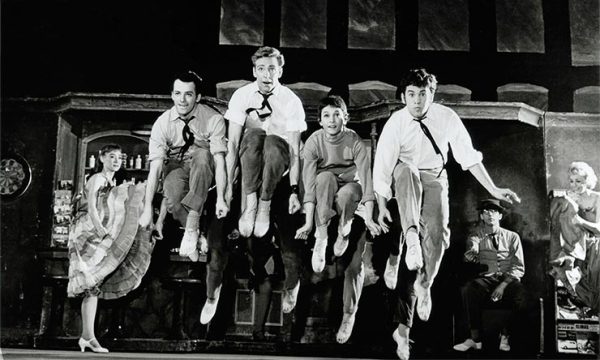
West Side Story was originally debuted in 1957 and composed by Leonard Bernstein (a staple of the Golden age) with the famous lyrics by Stephen Sondheim. This classic follows the familiar tale of two opposing groups of people, where one from each ends up falling in love. In this specific story, the tale centers on two opposing gangs, the primarily white Jets and the Puerto Rican Sharks, while at its core, a tragic romance. This musical was pivotal for its time in addressing themes of social unrest, discrimination, and racism.
The romance follows Tony, who is a Shark, and Maria, who is a Jet. Maria’s brother is the head of the Sharks and is fighting for control of the Manhattan streets against the Jets. Similar to its Shakespearean inspiration, Tony and Maria fall in love against all odds, yet this ends in sorrow. Tony is killed by Maria’s brother, and the musical ends on a hopeful note that their shared grief will force a possible path towards reconciliation between the gangs.
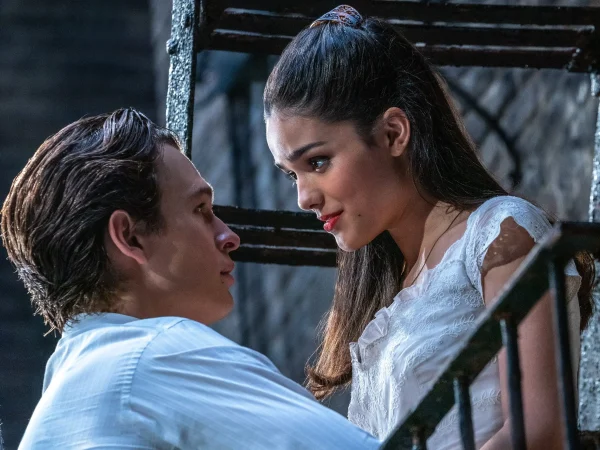
While tragic, this musical has stood the test of time due to its cultural impact and hard-hitting themes that are still relevant in today’s time. The consequences of both gang’s violence results in the hard-hitting impact on the audience; only their grief and destruction would bring them together in the end. However, despite its cultural impact, it has received criticism for the same reason. Maria was famously portrayed by white actresses in early showings, and critics often note the stereotypical way Puerto Rican families are portrayed: the men as uneducated and violent and poor, and the women as loud, abrasive, and sassy. While harmful and discredited in modern times, even seen as cliche, the fact that there was any non-white representation at all in the 1950s has marked this musical as a timeless classic.
No matter its issues, there is no arguing that if you’re in the mood for something classical, West Side Story is a sure fire way to get into the Valentine’s Day spirit. Other notable classic romance musicals include The Phantom of the Opera (1986), Singin’ in the Rain (1952), and The Music Man (1957).
Fairytale & Mythological Retellings
Fairytales and mythology are present in almost every form of pop culture media – especially Valentine’s Day. Rom-coms often take on variations of stories like Princess Cinderella, the Greek myth of Hades and Persephone, and Sleeping Beauty. This is no different in the world of Broadway. Many of the most famous household fairytales have been adapted into a musical variation. These include the popular Aladdin (2011), Into the Woods (1988), The Little Mermaid (2007), and Anastasia (2016).

What differentiates these Broadway variations is that oftentimes they add musical numbers and plot points that were not in the original source material. Additionally, the romance subplot becomes a heavy focus of the show. The romance in these retellings often takes one of two forms: tragic or tender. The pure innocence of fairytales is present in Disney retelling musicals, but the heartbreaking tragedy of Greek inspired myths are woven into mythological retellings. These qualities of mythological romance are evident in one of the most revered romantic retellings on Broadway: Hadestown.
Hadestown
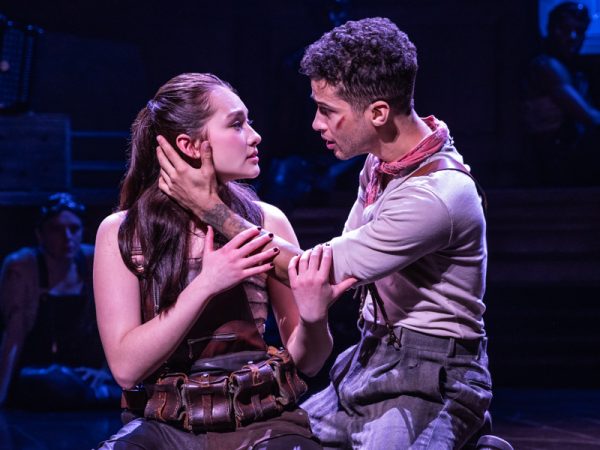
Hadestown originally debuted in 2006, with music and lyrics written by Anais Mitchell. The story takes on the ancient tragedy of Orpheus and Eurydice: a Greek story about a poet trying to bring his wife back from the Underworld. The twist in Hadestown, however, is the intertwining of two famous Greek myths: not only the story of Orpheus and Eurydice but the tempestuous marriage between the gods Hades and Persephone. Persephone’s seasonal powers cause famine and extreme weather, leading Eurydice to desperately seek work in Hadestown, where she unknowingly signs her life away.
The two romance plots in this musical are marked with themes of devotion, doubt, and tragedy. Persephone has become strained in her marriage with Hades and chooses to spend more time above ground (leading to extreme seasonal weather). Their story is one of resentment, longing, and forgiveness. Orpheus and Eurydice take on the softer romantic aspect of the musical. Their young love is full of longing and devotion, however doubt is what kills them in the end. Hades agrees to release Eurydice but only if Orpheus leaves without looking back. Overcome with doubt, Orpheus looks back, and ends their story in tragedy.
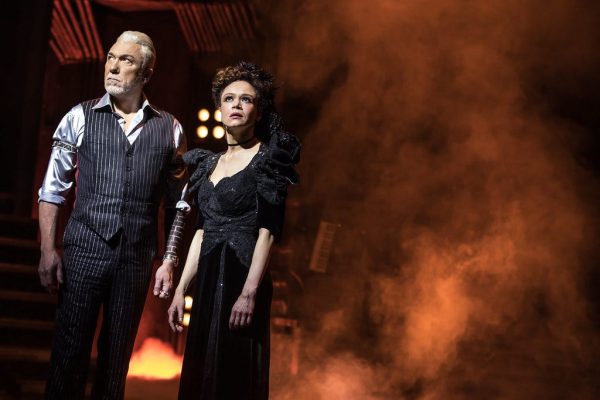
While tragic in ending, the musical was an instant hit when released. It won the Tony Award for Best Musical in 2016. Its popularity has not dwindled in the years since its release due to its relatability and fresh music composition. However critics often note that the musical’s slow pace and near constant singing take away from the overall romantic affect intended. Despite that, the widespread critical acclaim garnered has secured Hadestown as a romantic retelling classic.
If you’re looking for the familiar comfort in fairytales this Valentine’s Day season, Hadestown is an excellent replacement for other forms of romantic media.
Jukebox
Even though most musicals are known for their innovative, original scores, there are some out there that pull from already existing music: Jukebox musicals. Jukebox musicals use songs that were not made for the show specifically. For example, in the West End phenomenon & Juliet, the characters sing renditions of “Since U Been Gone” by Kelly Clarkson and “Oops I Did It Again” by Britney Spears. These musicals were created with the intention of pulling a younger audience in by having the characters sing familiar, relatable songs that people already know.
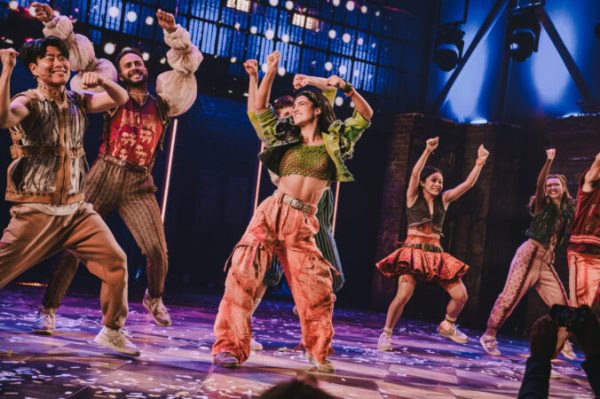
This makes Jukebox musicals strong in terms of romance. Their romances are often more enticing to younger viewers, because not only do they use popular songs, but their romantic plotlines are often about young people as well. Another example of this would be in the classic Jukebox hit: Footloose, which is entirely about high schoolers. But one of- arguably the most well-known- Jukebox rom-com is the ABBA inspired: Mamma Mia.
Mamma Mia
Mamma Mia came out in 2001 and was written by Catherine Johnson. However, every song in the musical is pulled from the 70s pop group: ABBA. The story takes place on a Greek island and follows young lovers Sophie and Sky the day before their wedding. Sophie discovers that her mother, Donna, is unaware of who Sophie’s biological father is. Sophie, unbeknownst to anyone else, invites all three possible men to her wedding. Chaos ensues, and Donna is forced to not only confront her breaking relationship with her daughter but her past relationships with the men.
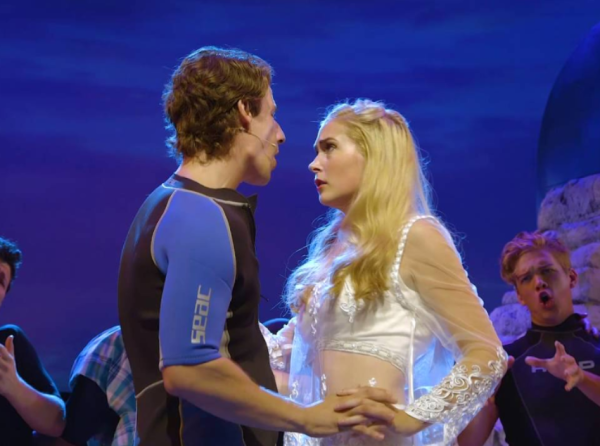
While the backdrop of the story is Sophie and Sky’s wedding, the main romantic (and chaotic) plot point of the show is Donna reconnecting with her old flames. While there are three in total, Donna has made her peace with two of them: Bill and Harry. However, Sam Carmichael, the third and most likely option for Sophie’s father, had ended things with Donna for another engagement. The course of the musical follows them reconnecting, hashing out their old grievances, and slowly being reminded of why they loved each other in the first place. At the end of the musical, Donna and Sam take Sophie and Sky’s place at the wedding, finally getting married after years apart, while Sophie and Sky remain engaged and decide to travel the world.
Without the iconic ABBA hits, Mamma Mia would not have been as successful as it was. Playwright Johnson selected ABBA for the duality of their music: many of their songs like “Honey Honey” and “Lay All Your Love On Me” that
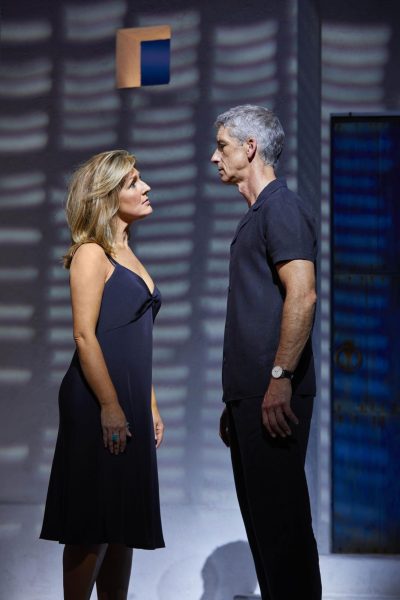
depict Sophie’s story have a young, playful energy to them, whereas their songs like “The Winner Takes It All” and “Knowing Me, Knowing You” take on a somber, mature tone for Donna. Johnson liked that duality because it blended nicely with the multi-generational story about a mother and daughter. Critics of the show often complain about the overall simplicity of it: there is a singular set design and not much beneath the surface of the story. Despite that, the show is a fun rom-com about two different women and executes exactly what it promises: a fun time.
If you’re interested in a romantic musical this Valentine’s Day season, but don’t exactly have the patience to sit through a full-length new show, Jukebox musicals like Mamma Mia can offer you the joy of a romance musical while keeping you engaged through familiar songs you already love.
Coming of Age
Between the well-known classics and fairytales lies the simple yet arguably most relatable: the coming-of-age love story. These musicals are exactly as they sound: young adults learning to find love amidst the challenges of growing and maturing. These musicals are almost always seen as “modern” musicals; they tackle issues relevant to young people today. The Outsiders (2023) is an example of these musicals, but perhaps one of the most influential coming of age romance musicals centers around two high school girls: The Prom.
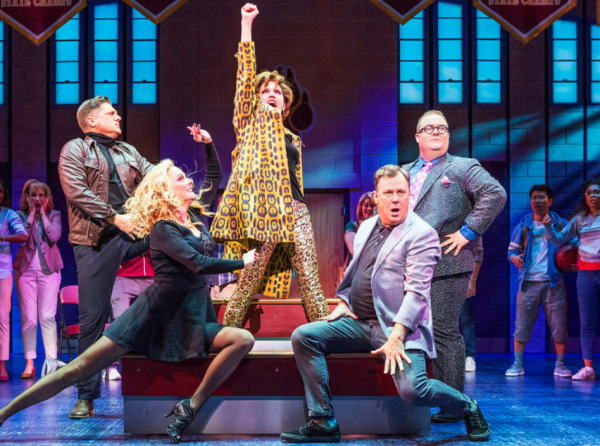
The Prom debuted in 2016, with lyrics by Chad Begeulin. The story follows four struggling Broadway actors who, in hopes of gaining some fame, travel to a small town in Indiana when they hear a small school will not allow 17-year-old Emma Nolan to attend prom with her girlfriend. Some rather questionable actions ensue on their part in order to change the PTA’s mind, but as the musical goes on, the actors begin to become truly invested in Emma’s story and help her in a town where she is not welcome.
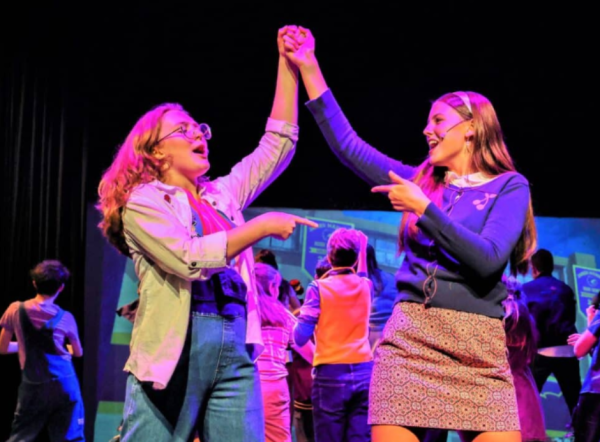
The romance in this musical follows the quiet, introverted Emma Nolan and her closeted cheerleader girlfriend: Alyssa Greene. Despite the challenges facing them and the serious nature of the musical as a whole, Alyssa and Emma’s love story is a heartwarmingly innocent one for all viewers to enjoy. Their dream in their small town is simply to dance with each other at prom without worrying about who’s looking. Alyssa faces challenges from her extremely prejudiced mother, and Emma deals with the commotion of the Broadway actors.
For viewers looking for a more relatable story, The Prom is sure to appeal to young audiences. Its characters are full of sassy numbers, subtle irony, and hilarious remarks on society. This musical is for those who’d be inevitably bored by classics but are still looking to be in the Valentine’s Day spirit.
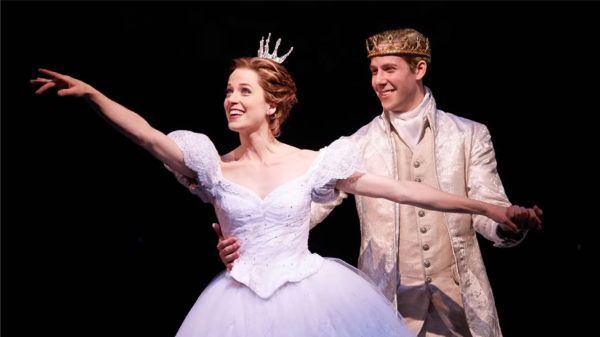
In conclusion, rom-coms and romantic songs on the radio aren’t the only way to get into the romantic spirit. Broadway has so much to offer in terms of romance, and these shows are only the tip of the iceberg. There are so many more shows in these different sub-genres of musical romance and are the perfect watch for this year’s Valentine’s Day!
Works Cited
- Hadestown – Broadway | Story | Broadway.com. (n.d.). Broadway Shows. Retrieved January 29, 2025, from https://www.broadway.com/shows/hadestown/story/
- Hortigüela, V., & Luján, A. (2022, February 19). What Was the Golden Age of Broadway? Image Carousel (1945). Broadway World. Retrieved January 29, 2025, from https://www.broadwayworld.com/article/What-Was-the-Golden-Age-of-Broadway-20220219
- Ledbury, J., & Walker, H. (2021, December 1). The Great ‘West Side Story’ Debate. The New York Times. Retrieved January 29, 2025, from https://www.nytimes.com/2021/12/01/theater/west-side-story-steven-spielberg-movie.html
- MAMMA MIA! Show History. (n.d.). Mamma Mia! Retrieved January 29, 2025, from https://mamma-mia.com/show-history
- O’Dell, C. (n.d.). “West Side Story” (Original cast recording) (1957). Library of Congress. Retrieved January 29, 2025, from https://www.loc.gov/static/programs/national-recording-preservation-board/documents/WestSideStory.pdf

